Key takeaways:
- Hydro energy production utilizes the power of flowing or falling water to generate electricity, offering a reliable energy source compared to solar or wind.
- Environmental impacts of hydropower include altered ecosystems, community displacement, and changes in water quality, raising concerns about sustainability.
- Hydropower provides benefits such as renewable energy, high efficiency, and potential job creation for local economies.
- The future of hydropower may include innovations like run-of-river systems to balance energy production with ecosystem preservation.

What is hydro energy production
Hydro energy production harnesses the power of flowing or falling water to generate electricity. It typically involves the use of dams, which create reservoirs, allowing water to be released in a controlled manner to turn turbines. I remember standing by a large dam once and feeling its immense energy; the sheer force of the water cascading down was nothing short of mesmerizing.
In my experience, the most fascinating aspect of hydro energy is its capability to provide a consistent and reliable energy source. Unlike solar or wind energy, which can fluctuate based on weather conditions, the flow of water can be predictable. Have you ever thought about how much power a river can generate if we allow it? When I consider the potential, it feels like we’re just scratching the surface of what hydropower can achieve.
To put it simply, hydro energy production is both a complex process and a natural partnership. Water cycles through our environment in a never-ending dance, and we have found a way to tap into that movement to produce energy. Reflecting on this interconnectedness really makes me appreciate how we can utilize nature’s design to meet our energy needs.
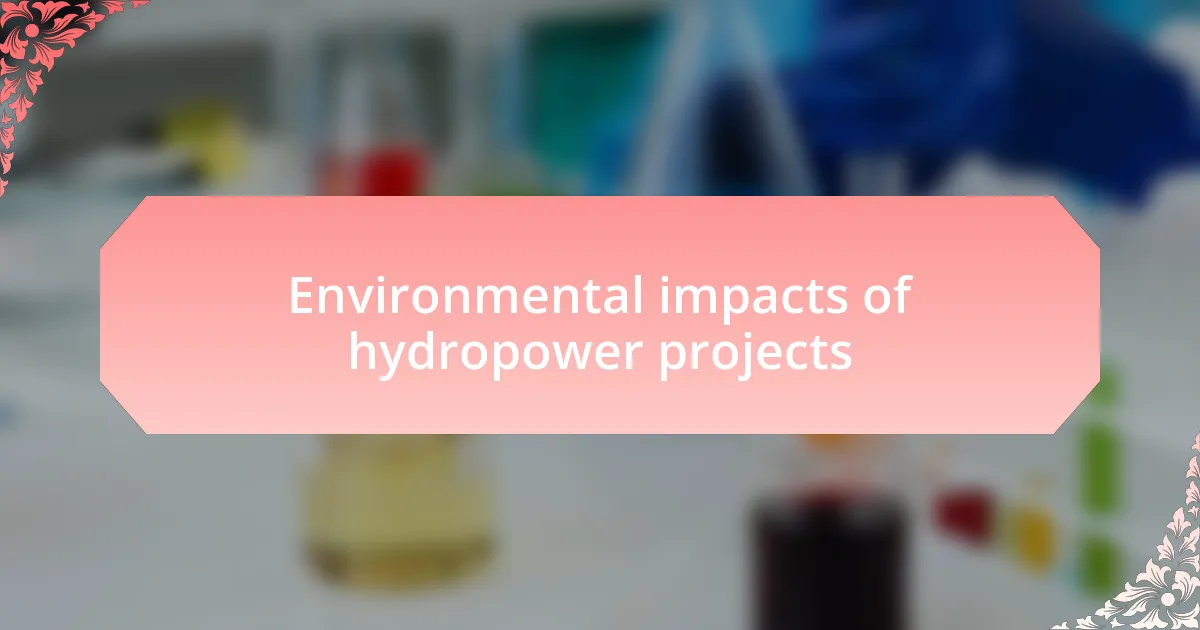
Environmental impacts of hydropower projects
The environmental impacts of hydropower projects can be quite profound. One of the primary concerns revolves around the alteration of local ecosystems. I recall visiting a site where a dam had changed a lush river valley into a stagnant lake. The loss of biodiversity was evident; the vibrant array of flora and fauna was replaced by a homogenous aquatic environment, which felt disheartening. It made me wonder, at what cost do we harness such powerful energy?
Another significant aspect is the displacement of communities. There’s a heavy emotional load to consider when families must leave their homes due to reservoir creation. I remember reading stories of towns submerged, their history lost beneath the water. This often leads to a strained relationship between the community and the project developers. Have we truly thought through the societal implications of our drive for clean energy?
Additionally, hydropower projects can affect water quality and sediment transport. When dams block rivers, the natural flow and nutrient-rich sediment often get disrupted. I once learned about the consequences this can have on fish populations, particularly those relying on upstream spawning areas. Isn’t it fascinating how each action in nature is interconnected? If we don’t take these impacts seriously, we risk damaging the very ecosystems that support not only wildlife but also our own survival.
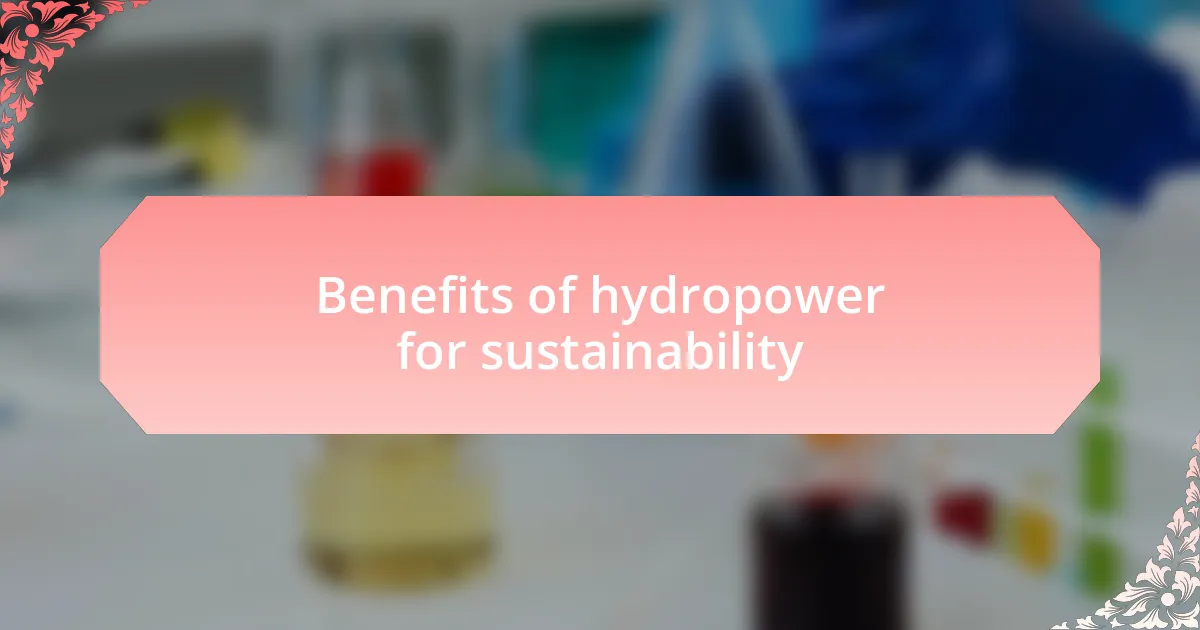
Benefits of hydropower for sustainability
One of the primary benefits of hydropower for sustainability is its ability to provide a renewable source of energy. When I think about my own experiences hiking near dams, I am always impressed by how the flowing rivers are harnessed to generate electricity without depleting resources like fossil fuels. This renewable aspect means we can produce energy without the long-term environmental costs associated with traditional energy sources, which is something we should all be striving for.
Moreover, hydropower plants operate at high efficiency, often exceeding 90%. This efficiency is something that truly resonates with me, especially when I consider the unnecessary waste present in other energy production methods. It’s incredible to think that the energy harnessed from moving water significantly reduces greenhouse gas emissions. Can you imagine how much we could lessen our carbon footprint if more regions adopted this technology?
Another remarkable benefit is the potential for job creation in local communities. During my visits to various hydropower project sites, I noted the influx of opportunities in construction, maintenance, and operations. These projects can become a lifeline for local economies, showing that pursuing sustainable energy sources not only helps the environment but also bolsters community development. Isn’t it heartening to realize that clean energy initiatives can simultaneously pave the way for economic growth?
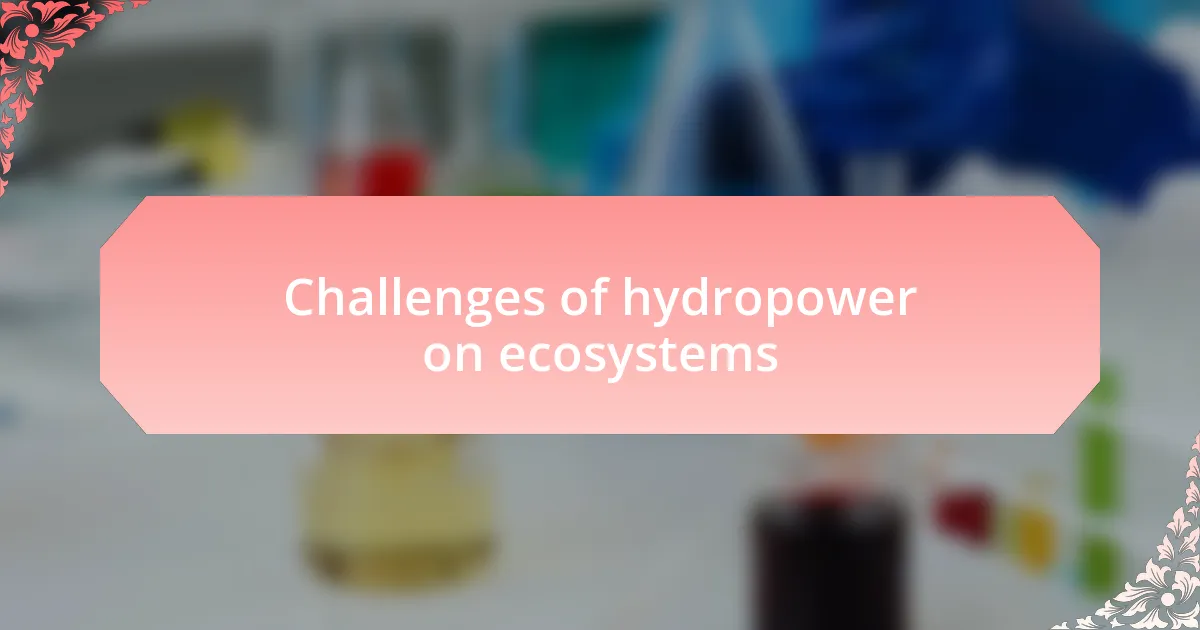
Challenges of hydropower on ecosystems
The construction of hydropower dams can profoundly disrupt local ecosystems. I remember visiting a river where a dam was built, and it struck me how the natural habitats for fish and other wildlife were altered. These changes often lead to a decline in biodiversity, as species struggle to adapt to the new environment created by the dam’s presence.
One of the most significant challenges is the alteration of water flow. When I think about the rivers I’ve enjoyed—swimming and fishing in their natural states—it pains me to realize that hydropower can drastically change these waterways, affecting aquatic life. Fish populations can dwindle because of barriers created by dams, limiting their migratory patterns and breeding grounds. Have you ever considered what it would be like if the location of your favorite swimming spot suddenly transformed beyond recognition?
Moreover, the creation of reservoirs often leads to the flooding of large areas of land, which can submerge forests and wetlands. I have witnessed this firsthand in areas where vibrant ecosystems were replaced by stagnant water. This flooding not only displaces wildlife but also affects the surrounding human communities and agricultural land. It’s a stark reminder of how we need to balance energy needs with the health of our planet’s ecosystems.
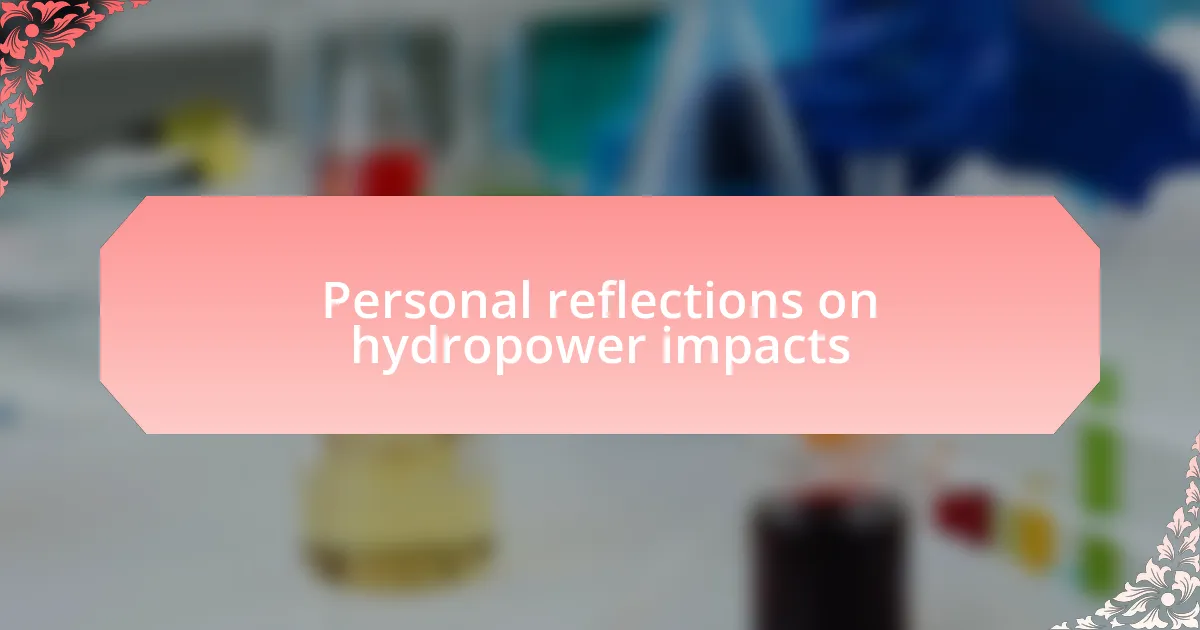
Personal reflections on hydropower impacts
Reflecting on the impacts of hydropower, I often think about the emotional weight of lost landscapes. I fondly remember hiking along a vibrant riverbank, the sound of rushing water filling the air with life. It’s hard to shake the feeling of longing when I consider how those very waters could become still and silent under a dam, turning lush trails into memories of what once was.
I also recall a conversation with a local fisherman who shared his frustrations about declining fish populations. He spoke about how his family relied on the river for their livelihood, only to see it change drastically after the dam’s installation. It made me ponder: how often do we prioritize our energy needs over the traditions and lives of those who depend directly on natural resources? The struggle for balance between energy production and preserving community culture looms large in my mind.
Even the water quality leaves me contemplating the broader consequences of hydropower. I have visited reservoirs that are teeming with algae, a stark contrast to the clear rivers I grew up swimming in. Polluted waters not only jeopardize ecosystems but also affect local health. Is the convenience of energy worth sacrificing clean water, and ultimately, our well-being? These reflections compel me to consider sustainable alternatives that could coexist with our natural world.
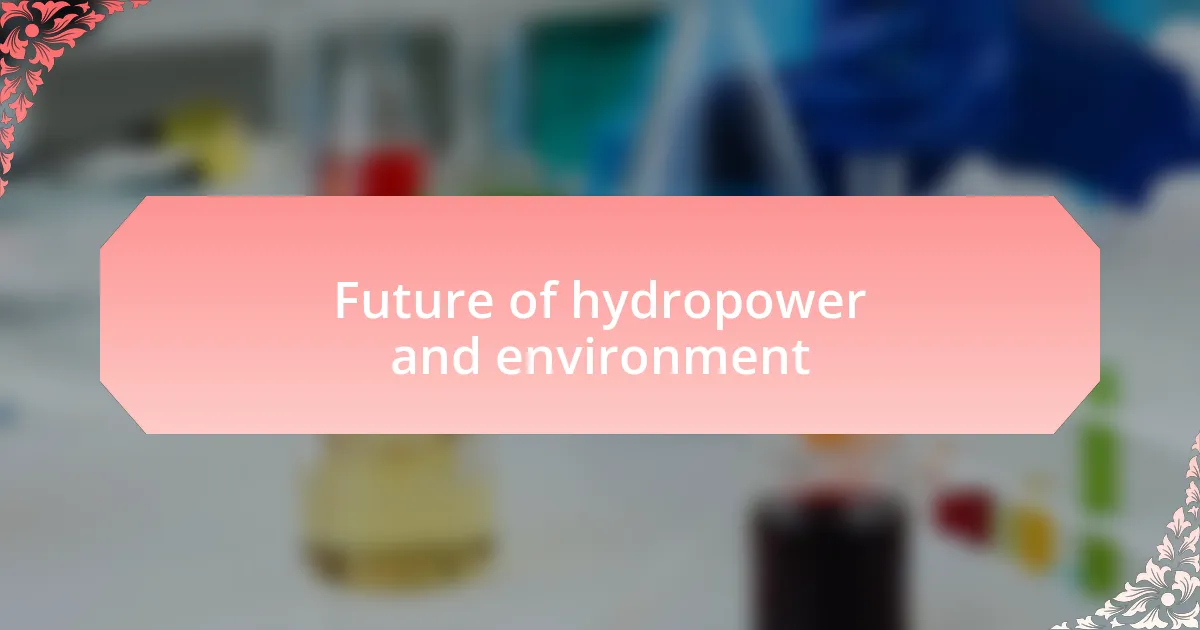
Future of hydropower and environment
As I look ahead to the future of hydropower, I’m struck by the potential for innovation in environmentally friendly technologies. I remember visiting a research facility focused on improved turbine designs that minimize fish mortality, and it gave me hope. Could we balance energy needs with aquatic life if we invest in such advancements?
In discussions with environmental advocates, the recurrent theme is how hydropower doesn’t have to be a zero-sum game. There’s a growing movement toward developing run-of-river systems that harness energy while maintaining the natural flow of rivers. I often wonder, could this be the key to harmonizing our need for clean energy with our duty to protect vital ecosystems?
Moreover, the conversation often shifts to the long-term health of our rivers and communities. It evokes memories of traveling to a town that turned to solar and wind as hydropower’s impacts became too noticeable. I couldn’t help but think: are we on the brink of a transition that could redefine how we produce energy without compromising the vibrant life of our planet?